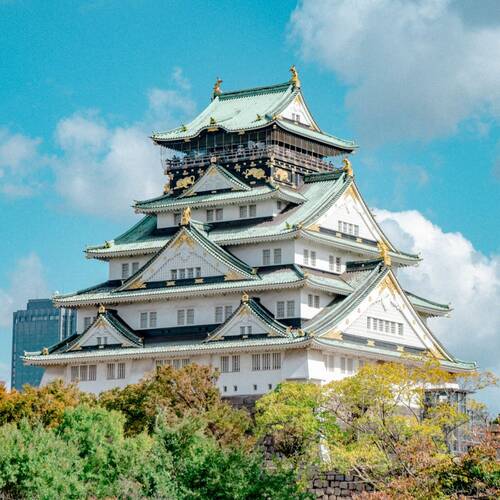The seemingly harmless, adorable-looking puffer fish, known as fugu in Japanese, is a perilous delicacy that harbors a poison potent enough to kill. In some regions of Japan, fugu is called "teppo," meaning "gun” — an apt name for a dish that turns dining into a game of Russian roulette, where each bite is a gamble with an empty barrel.
Rumor has it that the Japanese emperor was forbidden from consuming it. Kabuki actor Bando Mitsugoro VIII claimed to be immune to the fish poison, but did not live to tell the tale after requesting fugu liver. Each year, a handful of people fail to survive their encounter with this deadly fish.
So, what makes this poisonous puffer fish such a highly esteemed delicacy? For some, the thrill of consuming such a risky dish is part of the allure; for others, it’s the unique flavor that draws them in.
Let’s delve into the world of Japanese fugu and discover if fear truly heightens the senses.
What is fugu?
The fugu, or puffer fish, is a family of poisonous fish belonging to the family of Tetraodontida. The innards of this fish — particularly its liver, ovaries and eyes — are suffused with a poison called tetrodotoxin (TTX), said to be more potent than arsenic, cyanide and anthrax.
Just two or three milligrams of this can disrupt nerve signaling and paralyze the muscles of its victims, who will remain conscious as they die from asphyxiation. There is no known antidote; the poison itself is colorless, odorless and tasteless, so those who consume it would not be aware of their peril until it is too late.
The tetrodotoxin is not produced by the fish itself but is a result of the fish's diet of poisonous starfish, snails and sea creatures infested with the tetrodotoxin-laden bacteria, to which the fish has built immunity over time.
In Japan, only licensed chefs are permitted to serve fugu, and self-preparations are outlawed. It’s a rigorous program, particularly in Tokyo, where the requirements are among the strictest.
Chefs must undergo two years of specialized training before taking the licensing exam, which consists of two stages: a written test, which includes identification of different species (including the beloved tora puffer fish) and their anatomy, as well as its TTX levels, while the second is a technical examination where chefs must demonstrate their ability to properly gut the fish.
To make it even more difficult, apprentices settle for “training fugu” that are frozen (a pound of wild, top-of-the-line fugu can cost $100). The performance must be completed in 20 minutes, and even the smallest trace of blood results in failure. Only about 35% of applicants pass.
But thanks to this regulation, annual poisoning cases from the fugu fish in Japan have dropped to fewer than ten — most of which involve individuals consuming fugu prepared by unlicensed chefs or attempting to prepare it themselves.
Following a series of double-digit death tolls, fugu liver (fugu kimo), where the tetrodotoxin is most concentrated, was banned in 1983.
History of fugu in Japan
Consumption of fugu has long been an ancient and rebellious practice. Fish bones have been unearthed in shell middens, called kaizuka, from the Jomon Period, dating back 2,300 years.
By the 16th century, the Tokugawa Shogunate banned fugu consumption in Edo due to rising death tolls among its samurai — to little avail, as people, particularly in the western region where government control was weaker, continued its consumption.
During the Meiji Era (1868–1912), the government reinstated the ban on fugu, though it remained a clandestine delicacy for those in the know. The turning point came when Prime Minister Ito Hirobumi sampled fugu in Shimonoseki, the puffer fish capital, and became so captivated by it that he initiated discussions with the governor of Yamaguchi Prefecture to lift the restriction.
After World War II, regulatory oversight transformed fugu into a revered and costly delicacy, reserved for special occasions, yet cherished nationwide.
How is fugu prepared in Japan?
Most fugu is now harvested in the spring during the spawning season and then farmed in floating cages in the Pacific Ocean.
The theory behind this practice is based on research indicating that the poison in fugu is stored as the fish build immunity from toxin-laden bacteria found in the starfish and snails it consumes. By caging them, fishmongers can feed the fish toxin-free food, reducing the tetrodotoxin levels, although wild fugu is still considered superior and highly sought after by connoisseurs.
To prepare fugu, chefs wield the fugu-hiki, a long, skinny, flexible knife to slice the fish. The outermost layer of the skin, greenish on the top and white underneath, as well as the liver, ovaries and guts are placed in the “non-edible” container to be disposed of on the market.
The hardest part is keeping the cuts clean; any drop of blood or trace of poison renders the part inedible. Once done, the hiki is stored separately from other knives.
Today, fugu is served in specialty shops and higher-end restaurants, such as kappo and ryotei, and sometimes makes an appearance in kaiseki course menus.
What does fugu taste like?
Thinly sliced as sashimi, fugu is described to carry a light and refreshing taste, mirroring the pale hue of its meat. The texture is chewier and almost rubbery, unlike most seawater fish. What you get in replacement of flavor is the tingling and numbing sensation from trace amounts of lingering poison.
A scholar-official in China during the Song Dynasty once remarked the taste of fugu as “worthy of death.” The secret lies in its reduced fat compared to other white-fleshed fish, with higher concentration of glutamic and inosinic acid that makes it more umami.
Flavors are typically enhanced with a dipping sauce like ponzu, a blend of soy sauce and citrus, or in hot pots (nabemono). The skin, meanwhile, is known for its gelatinous, firm and crunchy texture.
How is fugu eaten?
Like most fish, fugu is exceptionally versatile, save for its non-edible parts. It can be served as sashimi, or it can be grilled, simmered or fried.
1. Fugu sashimi
Fugu sashimi, known by various names such as fugusashi or tessa, refers to the same exquisite dish. The term usuzukuri describes the technique of slicing the fugu so thinly that the slices become translucent.
The slices are arranged in an elegant pattern resembling a chrysanthemum that holds dual symbolism: an eerie omen as flowers often appear in funeral wreaths in Japan, but the chrysanthemum itself symbolizes longevity. This is a mirror in fugu dining, where the allure of the delicacy comes with the inherent risk of its poisonous nature
Fugu sashimi is often served with ponzu sauce, grated daikon radish, wasabi, bitter orange or sudachi citrus fruit.
2. Fugunabe
While fugu sashimi showcases the chef’s precision and artistry, fugunabe, or fugu hot pot, is more straightforward. This warming winter delicacy is simmered with seasonal vegetables in a dashi broth.
The broth varies by region, with the dish being particularly prevalent in Yamaguchi Prefecture. In the Kansai region, fugu hot pot is known as techiri, but it is also called teppo or chirinabe, referring to the way the fish meat shrivels when it meets the hot broth.
3. Fugu milt
Spring is the spawning season for fugu, but during winter, chefs are gifted with the harvest of shirako, or milt. Shirako is the male fish's genitalia containing sperm, prized for its velvety texture and oceanic flavor. It can be served raw with ponzu and wasabi, or prepared grilled or tempura-style.
4. Sumibiyaki fugu
The term sumibiyaki refers to grilling over charcoal, which defines this dish. Charcoal grilling imparts a slightly crispy exterior to the fugu while keeping the interior tender and moist. The smoky aroma from the charcoal enhances the subtle taste of the fugu, resulting in a balanced and refined dish.
5. Fried fugu
Probably an easier dish for first-timers, fried fugu could either be fried karaage-style, or in a lighter tempura batter. This adds a new layer to the chewy fish: crunchy on the outside, but still more bite on the center.
6. Fugu ojiya
Fans of traditional Japanese cuisine will be familiar with zosui, a rice soup typically packed with various ingredients. Fugu ojiya is a notable variety of this dish. Often served as the final stage after finishing a fugu nabe, the chef transforms the leftover broth into a thicker, porridge-like zosui.
-
Hirezake
It’s more of a drink than a dish. The fin of the blowfish is grilled over a flame until charred, then steeped in hot sake. The fumes from the grilling intensify the drinking experience, preserved by keeping a lid on the drink throughout the meal.
The result is a sake that tastes faintly of the ocean and takes on a savory, broth-like quality. Popular in Japan during the cooler months, it offers a delightful alternative to the typical warmed shochu.
Where can you find the best fugu in Japan?
Fugu specialty restaurants are few and far between. Always ensure that the restaurant you choose has a proper license. Here are some of our top picks for fugu specialty restaurants, where the delicacy is prepared safely by licensed chefs.
Read more: Best Fugu Restaurants in Osaka
Best fugu puffer fish restaurants in Japan
1. Genpin Ginza 1-chome
At Genpin Ginza 1-chome, there are tora fugu — tiger puffer fish — dished year-round without compromising on quality. The restaurant relies on farmed and wild tiger puffer fish from suppliers in Shimonoseki, proclaimed to be the tora-fugu capital of the country.
During off seasons of wild tiger puffer fish, the restaurant uses blowfish specially reared and prepared using their proprietary patented method. Licensed chef delicately handles the fish; knife treatments see the blowfish turn into gossamer slices of sashimi.
During winter, the Kansai tecchiri hotpot becomes a dish loved by all. Each dish goes perfectly with the house’s ponzu sauce, made by mixing their original honjozo soy sauce with sudachi and yuzu juice from Tokushima.
2. Hakata Nakasu Rokusantei
The first-floor counter gives you a glimpse of what’s to come: table mats adorned with fugu illustrations and photo frames of the fish hanging above. For almost 60 years, licensed chefs at Hakata Nakasu Rokusantei have been expertly serving this delicacy.
The blowfish is prepared in various ways: deep-fried as karaage, sliced thin for sashimi, or cooked in a traditional hotpot. But it wouldn’t be a Fukuoka restaurant without its emblematic fish: the expensive longtooth grouper called ara (it’s also called kue elsewhere in Japan), harvested from the spectacular water of Genkai Sea to Fukuoka’s north.
Beyond that, there are the pristine delicacies, such as the okoze, or devil stinger, whose grotesque appearance belies the sweetness of its meat.
3. Torafugu-tei Ginza
One of the most visited outlets of the Torafugu-tei sees a steady stream of curious customers pass through its doors for a taste of this delicacy. This is a restaurant that is all about dedication: Kanto’s foremost fugu specialist transports its puffer fish live in under 15 hours from its Nagasaki fisheries to its Ginza restaurant.
The fish are raised for at least two years in Hirado Port, off the coast of Nagasaki Prefecture, and are let to swim freely in a tank in the restaurant. The fugu are only taken out when an order comes, served up fried, boiled or raw.
4. Hakata Hodoyoshi
One does not simply “stumble” upon Hakata Hodoyoshi. You head to the Canal City Hakata shopping complex, right outside Nakasu-Kawabata Station, after snagging a reservation for one of the most famous names in said industry: Hodoyoshi. Having been in business since 1958, Fukuoka locals have since come to trust it as one of the best places to enjoy the region’s local cuisine.
In the summer and spring, the restaurant enjoys popularity for its menu of the longtooth grouper, or “kue” in Japan. In winter, it’s the coveted puffer fish. It’s served as hotpot and sashimi, with a licensed chef handling the fugu in great dexterity, making sure the meat isn’t contaminated with tetrodotoxin.
5. Fugu Club Miyawaki Bettei
Other fugu specialty restaurants like to stick to the traditional; owner Miyawaki Takahashi of Michelin-selected Fugu Club Miyawaki Bettei likes to inject a little bit of fun into his puffer fish. Miyawaki's treatment of fugu invites guests to look beyond its perilous nature and embrace it as a centerpiece for a fun expedition.
His fugu chawanmushi with fish roe is a predecessor for one of his signature dishes: a thin-crust pizza topped with pickled fugu roe. He cleverly repurposes the blanched skin of the fish as wraps for spring rolls. Rightfully, he dresses perfectly sliced puffer fish sashimi with caviar and olive oil.
When the colder months set in, he takes particular joy in grilling a substantial 3kg tiger fugu and its milt — a coveted winter delicacy.
Feel like taking a longer walk on the dangerous side of Japanese cuisine? Explore our full list of fugu restaurants in Japan.
Fugu puffer fish FAQs
How dangerous is fugu?
Fugu, or puffer fish, is highly dangerous due to its potent tetrodotoxin, a poison found in its organs, especially the liver and ovaries. This toxin is 1,200 times more lethal than cyanide, and a tiny amount can be fatal. Only licensed chefs, who undergo rigorous training and certification, are permitted to prepare fugu in Japan
How many people die from fugu?
On average, a few people die each year in Japan from improperly prepared fugu. Strict regulations and trained chefs have significantly reduced these numbers.
How do you prepare fugu?
Fugu preparation involves carefully removing the toxic parts, such as the liver and ovaries, and slicing the fish into thin, delicate pieces. Only licensed chefs with specialized training are allowed to prepare fugu.
Where to eat fugu in Osaka?
In Osaka, popular places to eat fugu include Zuboraya and Genpin Fugu. Both restaurants are well-known for their expertly prepared fugu dishes. Find more fugu restaurants in Osaka.
Where to eat fugu in Tokyo?
In Tokyo, notable fugu restaurants include Usuki Fugu Yamadaya and Torafugu Tei. These establishments are famous for their high-quality fugu and skilled chefs.
How much does fugu cost in restaurants in Japan?
Fugu costs in restaurants typically range from ¥5,000 to ¥30,000 (approximately $50 to $300) per person, depending on the restaurant and the specific fugu dishes ordered. Wild fugu are always more expensive than farmed fugu.
 Tokyo
Tokyo Osaka
Osaka Kyoto
Kyoto Hyogo
Hyogo Hokkaido
Hokkaido Nara
Nara Fukuoka
Fukuoka Hiroshima
Hiroshima Kanagawa
Kanagawa Ishikawa
Ishikawa Florence
Florence Paris
Paris Rome
Rome Porto
Porto Barcelona
Barcelona New York
New York Venice
Venice Madrid
Madrid Marrakesh
Marrakesh Istanbul
Istanbul